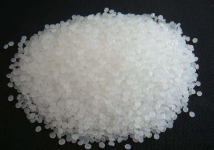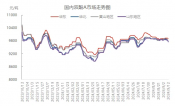read: 1032 time:2025-07-10 13:34:13 from:化易天下
In the field of chemistry, understanding the acidity of different compounds is crucial, especially in the chemical industry where acids are used in a wide variety of applications. Among the various acids, trichloroacetic acid (TCA) and acetic acid are two that often come up in discussions of organic acids. However, one significant point of comparison is that trichloroacetic acid is stronger than acetic acid. In this article, we will explore the reasons behind this difference in acidity by examining molecular structure, electron-withdrawing effects, and the concept of acid dissociation.
The molecular structure of an acid plays a pivotal role in determining its strength. Acids are substances that donate protons (H⁺ ions) in aqueous solutions, and the ease with which they can release these protons defines their strength. Acetic acid (CH₃COOH) is a simple carboxylic acid with a methyl group (-CH₃) attached to the carboxyl group (-COOH). In contrast, trichloroacetic acid (CCl₃COOH) has three chlorine atoms replacing the three hydrogen atoms of the methyl group. This substitution of chlorine atoms in TCA is a major reason why trichloroacetic acid is stronger than acetic acid.
One of the primary reasons trichloroacetic acid is stronger than acetic acid lies in the electron-withdrawing effects of chlorine atoms. Chlorine is a highly electronegative element, meaning it has a strong tendency to pull electrons towards itself. When chlorine atoms are attached to the carbon adjacent to the carboxyl group, they pull electron density away from the carboxyl group.
This electron withdrawal has two significant effects:
To quantitatively compare acid strength, chemists often refer to the acid dissociation constant, or pKa value. The pKa value is inversely related to acid strength—the lower the pKa, the stronger the acid. For acetic acid, the pKa is around 4.76, indicating that it is a weak acid. On the other hand, trichloroacetic acid has a much lower pKa of approximately 0.7, signifying that it is a significantly stronger acid. This substantial difference in pKa values highlights the enhanced acidity of TCA due to the electron-withdrawing chlorine atoms.
In summary, the key reasons why trichloroacetic acid is stronger than acetic acid are rooted in the molecular structure and electron-withdrawing effects of chlorine atoms. The substitution of hydrogen atoms with chlorine leads to greater stabilization of the conjugate base and increases the acid's ability to dissociate. This is reflected in the much lower pKa of trichloroacetic acid compared to acetic acid. Understanding these principles helps chemists and chemical engineers make informed decisions about which acids to use in various industrial processes, where the strength of an acid can significantly impact the outcome.

Jincheng Petrochemical's 300000 ton polypropylene plant successfully trial production, 2024 polypropylene market analysis

The ABS market remains sluggish, what is the future direction?

Market differentiation of bisphenol A intensifies: prices rise in East China, while prices generally decline in other regions

The production method and process flow of silicone acrylic lotion, and what are the common raw materials